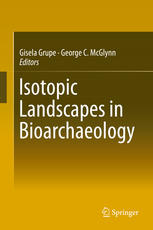

Most ebook files are in PDF format, so you can easily read them using various software such as Foxit Reader or directly on the Google Chrome browser.
Some ebook files are released by publishers in other formats such as .awz, .mobi, .epub, .fb2, etc. You may need to install specific software to read these formats on mobile/PC, such as Calibre.
Please read the tutorial at this link: https://ebookbell.com/faq
We offer FREE conversion to the popular formats you request; however, this may take some time. Therefore, right after payment, please email us, and we will try to provide the service as quickly as possible.
For some exceptional file formats or broken links (if any), please refrain from opening any disputes. Instead, email us first, and we will try to assist within a maximum of 6 hours.
EbookBell Team

5.0
80 reviewsThis work takes a critical look at the current concept of isotopic landscapes ("isoscapes") in bioarchaeology and its application in future research. It specifically addresses the research potential of cremated finds, a somewhat neglected bioarchaeological substrate, resulting primarily from the inherent osteological challenges and complex mineralogy associated with it. In addition, for the first time data mining methods are applied. The chapters are the outcome of an international workshop sponsored by the German Science Foundation and the Centre of Advanced Studies at the Ludwig-Maximilian-University in Munich. Isotopic landscapes are indispensable tracers for the monitoring of the flow of matter through geo/ecological systems since they comprise existing temporally and spatially defined stable isotopic patterns found in geological and ecological samples. Analyses of stable isotopes of the elements nitrogen, carbon, oxygen, strontium, and lead are routinely utilized in bioarchaeology to reconstruct biodiversity, palaeodiet, palaeoecology, palaeoclimate, migration and trade. The interpretive power of stable isotopic ratios depends not only on firm, testable hypotheses, but most importantly on the cooperative networking of scientists from both natural and social sciences. Application of multi-isotopic tracers generates isotopic patterns with multiple dimensions, which accurately characterize a find, but can only be interpreted by use of modern data mining methods.